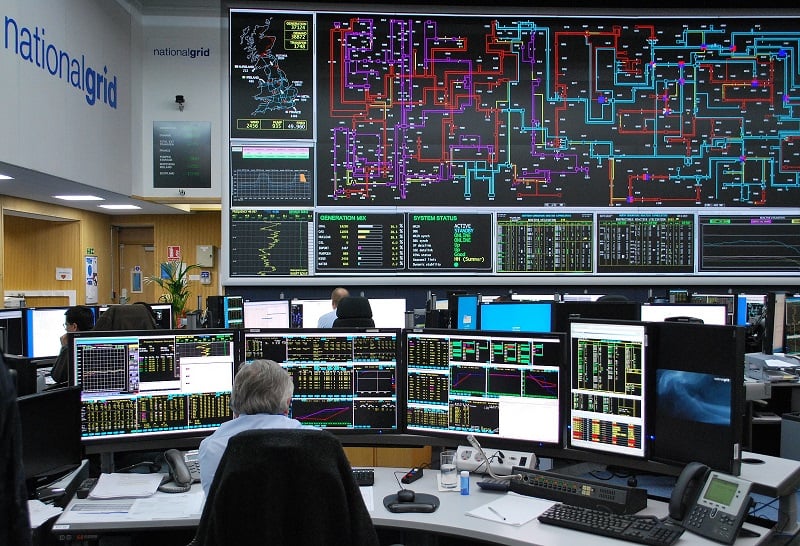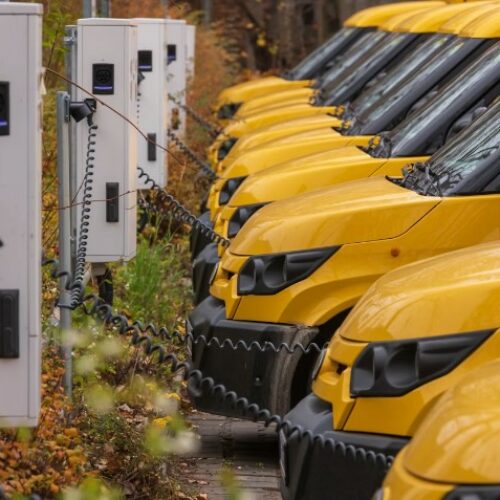A national network of high speed electric vehicle chargers and large-scale batteries connected directly to the transmission network has been unveiled to offer a new business model to the country’s energy storage market.
Pivot Power, brought about by the directors of battery developer Become Energy, is proposing to connect over 2GW of lithium-ion batteries to the national grid while deploying rapid EV charging infrastructure in a £1.6 billion programme.
The company is targeting 45 sites around the country to install 50MW batteries near major roads and towns to accommodate the growth of EVs with up to 100 rapid 150kW chargers. These will be future-proofed to ensure they can support rapid 350kW chargers in coming years.
The plans, which aim to deploy at 10 sites over the next 18 months, chime with those recently put forward by National Grid’s EV lead Graeme Cooper, who told MPs that the system operator was developing plans for an EV network of 50 sites around the country to solve range anxiety.
According to chief executive Matt Allen, Pivot Power’s plans offer an alternative model to bring about an EV revolution in the UK.
“Pivot Power’s plans are completely separate but they are complementary to the proposals that have been mentioned by National Grid and Graeme [Cooper] for that network of rapid charging stations, which had been focused on their side on the motorway service station environment.
“A big key differentiator on our part in terms of the National Grid scheme is very much in the involvement of battery storage in our business model,” he said.
The ‘battery plus’ model, as it has been dubbed by Pivot Power, will see what could be the world’s largest network of transmission network-connected batteries rolled out over the next five to six years.
According to Michael Clark, chief technical officer of Pivot Power, it was developed in response to the diminishing returns available in frequency markets as a result over over-saturation; an issue which should be overcome by playing in the transmission network space for the first time.
“Fundamentally we’re describing this as battery plus because we’re going up the transmission system; a whole other voltage level and size of network so it’s less about smoothing power because we have access to lots of power, its more in managing the costs that the batteries will play their part,” he said.
“The [revenue stack] will not be uncommon it’s just the scale that we’re doing it at. We’ll be looking for ancillary market contracts, be that from frequency response or capacity market, but due to the access to the transmission network we’ll be looking at a much more trading heavy model with ahead and intra-day balancing mechanism available to us right from the start for each commissioned project.
Pivot Power has already secured financial backing from Downing LLP, a UK-based investment manager which has funded the initial phases of the new network before reaching out the wider investment community.
According to partner Colin Corbally, Pivot Power’s plans offer a unique opportunity by moving up to the transmission system which has thus far been untapped in the UK.
“There’s a presumption in the market that the cost of connecting to the transmission network would just be too much. Historically a lot of the developers have come from solar development who are used to being on the distribution network and people haven’t necessarily thought outside the box in terms of doing this. This possibility was always sitting there, it just took someone to start asking the right questions,” he told Current.
“This is quite different and has a number of advantages being connected directly to the transmission network. We have a lower cost of energy because we’re paying any distribution charges, there are additional sources of revenue, the balancing mechanism in particular, so there’s a different revenue stack. Our battery network losses should also be directly visible in the National Grid control room so it’s quite a different proposition just on the battery side.
“We have found that National Grid have been very supportive, they see the benefit for them in this progressing [and] we would hope that potential investors would be able to get comfort directly from National Grid if they need it.”
Cooper commented that the network, while accelerating and accommodating the adoption of EVs in the UK, would “give the system operator more choice and flexibility for managing the demands in the day to day running of the network”.
These advantages are intended to overcome the uncertainties prevalent in the UK energy storage market as a result of National Grids ongoing review of ancillary services, Ofgem’s targeted charging review and other changing market conditions.
Corbally added: “What we’re now able to offer is substantially more compelling so people who have been interested in the battery proposition but have concerns and doubts, we’re pretty confident they’re going to see this as a different opportunity that is that much more interesting.”
The opportunities posed by the transmission connected batteries will also help to overcome the high upfront cost of the EV chargers, which are unlikely to draw high revenues in the early years prior to higher numbers of EVs on UK roads, which currently stand at around 145,000.
Clark explained: “We’re taking the pressure off the EV chargers in the early years by putting them together with the batteries and allowing us to get the connections they are going to be require. Over time we expect the revenue from electric vehicles to increase over the next [decade].
“That will not be a significant piece of the revenue stack in year one but it will more in year two and year three,” Allen continued.
“So there has to be more of a view in this in terms of the EV revolution; is it happening? In our view, yes it is and it will be happening at pace and we see a big role for us to play in advancing that.”
From an investment perspective, Corbally agreed that revenues from EV charging will not be expected in the outset, but could grow to become a significant portion of the revenue stack thereby offsetting uncertainty over the future of energy storage revenues.
“We can see there should be good revenues on the battery side going out 5-10 years but it’s quite difficult to see how it might look beyond that. Over that time we would expect there to be growth in demand on the EV side of things which provides that future-proofing,” he said.
“We have a phenomenal amount of power available at these sites to provide that. We would see it becoming a significant revenue stream within five years and within 10-15 years it could become the main revenue stream.”
The first site is expected on the south coast and could be operational by the middle of 2019, subject to planning approval, and more details will be announced in the coming months. The search is already underway for technology partners and suppliers for both the batteries and EV chargers and is expected to be completed with four months, while new funding partners to support the project are also being sought.





